Let’s cut through the froth and get straight to the point: mastering the French press is not just about making coffee. It’s an art. An art steeped in tradition, precision, and a bit of personal flair. In today’s fast-paced, capsule-coffee world, taking the time to brew a cup the old-fashioned way is a statement. It says you appreciate the craft. It says you value the moment. And most importantly, it says you know a damn good cup of coffee when you taste one.
Learn to Use a French Press Coffee Maker
- What you will need: Coffee beans, grinder, French press, water, stirrer.
- Steps to use a French press: Measure and heat water, grind and add coffee, add water, stir, steep, plunge, pour, and enjoy!
What You Need
Before we dive into the brewing process, let’s talk gear. A quality French press, fresh coffee beans, a grinder, a kettle, and a bit of patience are all you need. But not just any French press; I’m talking about one that feels right in your hands, with a plunger that glides smoothly and a build that keeps your coffee hot for those mornings when you’re not quite ready to face the world.
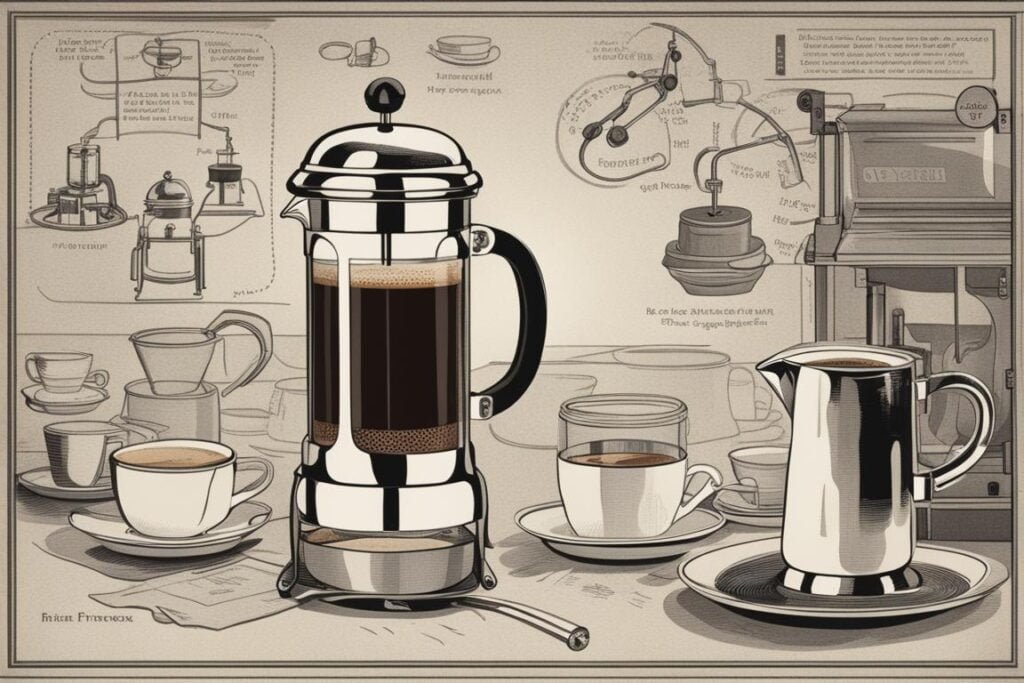
Insider Tip: Opt for a burr grinder over a blade one to ensure your coffee grounds are uniform in size. This little detail can make or break your brew.
 | ||
|---|---|---|
| Groenenberg French Press | BODUM Kenya 3 Cup French Press | TBGENIUS 4 Cup Cafetiere Coffee |
| CLICK HERE | CLICK HERE | CLICK HERE |
CLICK HERE TO CHECK OUT MORE FRENCH PRESS
Personal Story: Perfecting the French Press Brew
Maria’s Morning Ritual
Every morning, Maria starts her day with a cup of freshly brewed coffee from her beloved French press. She carefully measures out the coffee grounds, ensuring the perfect ratio for a rich and flavorful brew. After adding the hot water, she stirs the mixture gently, taking care to fully saturate the grounds. Maria then lets it steep for exactly four minutes, her preferred time for optimal extraction.
The Aroma of Success
As Maria presses down the plunger, a satisfying aroma fills the kitchen, signaling that her coffee is ready. She pours herself a cup and takes a moment to savor the deep, robust flavor that only a French press can deliver. With each sip, she knows that her morning ritual has once again set the tone for a productive day ahead.
Step 1: Measure and Heat
The foundation of a great French press coffee lies in its golden ratio: about 1 gram of coffee to 15-18 grams of water. But who am I to dictate your taste? Experiment. Find your perfect balance. Then, heat your water to just below boilingaround 200°F. This is crucial. Too hot and you’ll scorch your grounds; too cool and you’ll under-extract, leading to a flat, uninspiring cup.
Step 2: Grind and Add Coffee
Grinding your beans just before brewing makes all the difference. Aim for a coarse, even grind. Think sea salt, not powdered sugar. This ensures optimal extraction and prevents your coffee from turning into a bitter, over-extracted mess. Add your grounds to the French press, standing proud as they await the transformation.
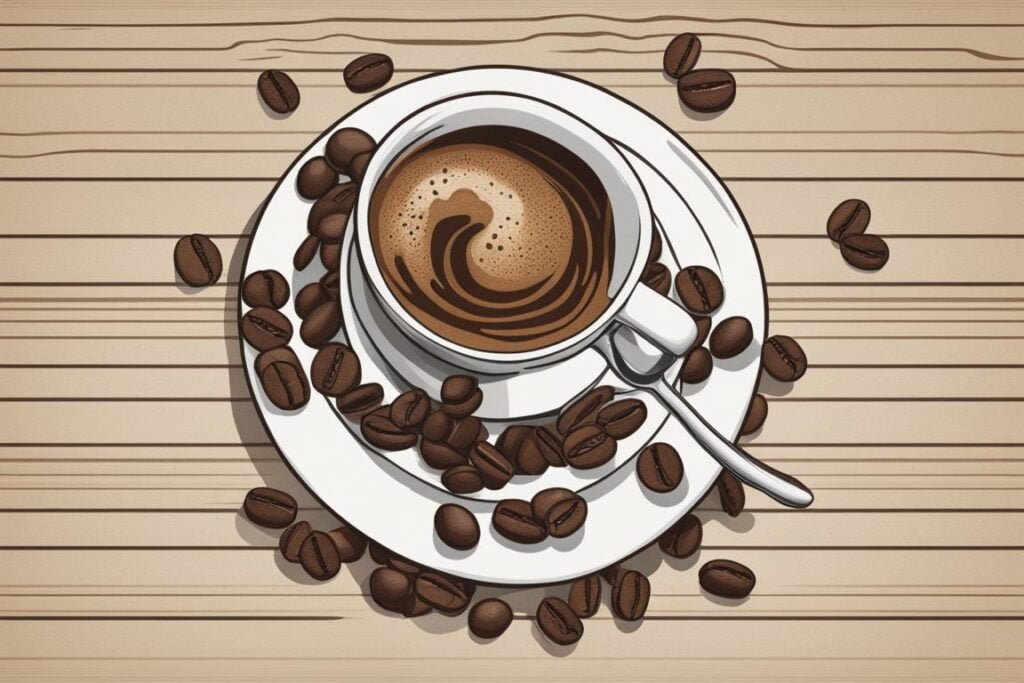
Step 3: Add Water
Ideal water to coffee ratio for french press
The ideal water to coffee ratio for French press coffee brewing can vary based on personal preference and the desired strength of the coffee. However, a common recommendation is to use a ratio of 1:15 to 1:18, which means for every gram of coffee, you would use 15 to 18 grams of water.
This ratio can be adjusted within this range to suit individual taste preferences. Experimenting with ratios between 1:12 and 1:16 is suggested to determine the ideal ratio that works best for you.
Using a digital coffee scale for accurate measurements is recommended to achieve consistent results.
Impact of Water-to-Coffee Ratio on French Press Coffee Flavor
The water to coffee ratio significantly impacts the taste of French press coffee. A higher ratio, such as 1:18 (water to coffee), results in a more balanced and subtle flavor profile, ideal for those who appreciate nuanced flavors and acidity in their coffee.
On the other hand, a lower ratio, like 1:12, produces a more intense and powerful cup of coffee with a creamy mouthfeel and strong flavors that can be perfect for those seeking a robust morning kick.
Experimenting with different ratios between 1:12 and 1:16 allows individuals to tailor the taste of their French press coffee to their preferences, whether they prefer a bold brew or a more delicate flavor profile.
Start by pouring a little hot water over the grounds to pre-infuse, letting them “bloom” for about 30 seconds. This releases carbon dioxide and ensures a smoother taste. Then, pour in the rest of your water in a slow, steady spiral. This isn’t just for show; it helps achieve a uniform saturation for a well-rounded extraction.
Step 4: Stir
With a wooden or plastic spoon (metal can damage the glass), give your brew a gentle stir. This is the moment of alchemy, where water and coffee come together, promising something magical. A simple stir ensures all grounds are fully immersed, setting the stage for an even extraction.
Step 5: Steep

What’s the Ideal Steeping Time for Coffee in a French Press?
Patience, my friend. Allow your coffee to steep for about 4 minutes. This is the sweet spot for a medium-bodied brew. Love a stronger cup? Feel free to steep a bit longer, but beware the fine line between bold and bitter.
Insider Tip: Use a timer. Consistency is key to mastering the French press.
However, the ideal steeping time can vary based on factors like the coarseness of the coffee grounds and personal taste preferences.
Generally, the steeping range for a French press can vary between 3 to 5 minutes, allowing some flexibility to adjust based on individual preferences
Step 6: Plunge
The plunge is more than a step; it’s a ceremony. At the end of your steep time, hold the handle firmly and press the plunger down slowly and steadily. If it feels too easy, your grind was likely too coarse. Too hard? Too fine. Find the resistance that produces the best brew for you.
Step 7: Pour and Enjoy!

Pour your freshly brewed coffee into your favorite mug. Notice the rich aroma, the vibrant color, and the body that only a French press can achieve. This is the moment of truth. Take a sip. Revel in the flavor that you’ve crafted.
The beauty of the French press isn’t just in the cup; it’s in the journey. From the tactile pleasure of grinding your beans to the anticipation of the steep, every step is a meditation. It’s a reminder to slow down, to savor, to enjoy the moment. And in a world that’s constantly rushing, that’s a philosophy worth brewing.
Read more about the art of French press brewing here.
In conclusion, mastering the French press is more than following a set of instructions. It’s about embracing a ritual that has been cherished by coffee lovers for generations. It’s about taking the time to enjoy every aspect of the brewing process, from selecting your beans to taking that first, satisfying sip. So, take these steps, make them your own, and discover the joy of brewing the perfect cup of French press coffee.
How To Use A French Press
Advantages of Choosing a French Press Compared to Other Coffee Makers
Using a French press for brewing coffee offers several benefits over other coffee makers:
| Advantages | Description |
|---|---|
| Rich, Delicious Taste | French presses do not use paper filters, allowing more oils from the coffee beans to be retained in the brew, resulting in a richer and more flavorful cup of coffee. |
| Control Over Taste | With a French press, you have control over the water temperature and brewing time, enabling you to experiment and customize your coffee to suit your preferences. |
| Portability | French presses are portable and can be used anywhere since they are compact and easy to pack, making it convenient to enjoy freshly brewed coffee on the go. |
| Cost-Effective | French presses are available at various price points, making them a cost-effective option for brewing high-quality coffee at home. |
| Environmentally Friendly | French presses eliminate the need for disposable paper filters, reducing waste and making them an environmentally friendly brewing option. |
| More Control | Unlike drip machines, French presses give you more control over the brewing process, allowing you to adjust variables like water temperature and steeping time to achieve your desired flavor profile. |
Overall, the French press method offers a simple yet effective way to brew coffee with enhanced flavors and customization options compared to other brewing methods.
Exploring Contrasts: Strong vs. Weak French Press Coffee
The difference between a strong and weak French press coffee lies in the concentration of flavors and intensity of the brew. Here are the key factors that contribute to this contrast:
- Coffee-to-Water Ratio: The strength of French press coffee is influenced by the ratio of coffee grounds to water. Using more coffee grounds relative to water results in a stronger brew, while using less leads to a weaker one.
- Brewing Time: The duration for which the coffee grounds steep in hot water affects the strength of the brew. Longer brewing times typically result in a stronger coffee, as it allows for more flavor extraction from the beans.
- Water Temperature: The ideal brewing temperature for French press coffee is around 200 degrees Fahrenheit. Using water that is too cold can result in a weaker extraction of flavors from the coffee grounds, impacting the strength of the final brew.
- Grind Size: Coarser grinds are recommended for a stronger coffee as they allow for more efficient extraction. Finer grinds can lead to over-extraction, resulting in bitterness and potentially weaker coffee.
- Extraction Period: The extended immersion period during brewing allows for a fuller extraction of flavors and oils from the coffee beans, contributing to a richer and more robust flavor profile in strong French press coffee.
By adjusting these variables such as the grind size, brewing time, water temperature, and coffee-to-water ratio, you can control whether your French press coffee turns out strong or weak based on your personal preferences.
Best type of coffee bean to use for french press?
the best type of coffee bean to use for a French press is a medium grind coffee bean. When using a French press, it is recommended to use regular or decaffeinated coffee beans ground to a medium grind.
A medium grind ensures that the coffee grounds do not clog the filter or float through, resulting in a well-extracted and flavorful brew.
While any type of roast can be used, a light-to-medium roast coffee bean is suggested for a less intense flavor profile. Freshly ground coffee beans are preferred for the freshest taste, but pre-ground coffee can also be used if needed.
Here is a list of the best types of coffee beans to use for a French press:
Whole Roasted Coffee Beans: Using whole roasted coffee beans and grinding them down to the right coarseness is recommended for a French press.

Union Hand Roasted Coffee
Boldly roasted to deliver a rich flavor without any bitterness. Indulge in a sweet and harmonious espresso experience, boasting prominent dark chocolate notes and a delightful treacle sweetness that adds depth and complexity to each sip. Union coffee guarantees specialty-grade beans, always 100% Arabica, making it the perfect gift for coffee enthusiasts.
Medium Roast Coffee Beans: Medium roast coffee beans are great for those who enjoy smooth floral tones with some chocolate undertones in their coffee. They are ideal for a medium roast flavor profile in a French press.
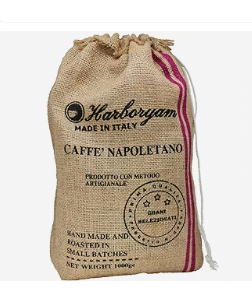
Harboryam Coffee Beans
100% Arabica beans sourced from Peru, Colombia, and Brazil. Delivers a smooth, velvety crema with hints of chocolate. Medium roast with an intensity level of 6 out of 10. We adhere to the original recipe, employing only the finest beans available. Crafted in Italy, following the artisanal tradition.
Dark Roast Colombian Gourmet Coffee: A dark roast Colombian gourmet coffee, specifically designed for making cold brew in a French press, offers a smooth, less acidic flavor without tasting watery or bitter when brewed as cold brew.
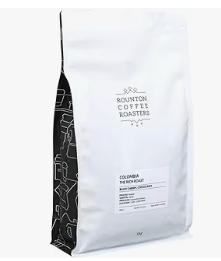
Rounton Coffee Roasters | Colombian Rich Roast
This Colombian coffee boasts a robust yet velvety profile, crafted through extended roasting to cater to the palate of traditional coffee enthusiasts. Ideal for those seeking a potent caffeine boost, its low acidity and smooth, rounded flavor mitigate bitterness, culminating in a dark brew with a delightful hint of chocolate in its finish.
French Lavender Ground Coffee: This medium roast ground coffee infused with real lavender provides a true lavender flavor, ideal for those who prefer a lighter, more floral taste in their coffee.
Organic Coarsely Ground Breakfast Blend: A breakfast blend ground to the perfect texture for French press brewing offers consistent, smooth flavor ideal for making cold brew with ease.
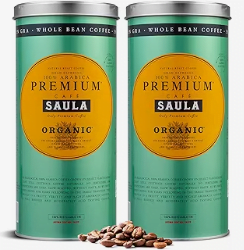
Premium Organic Coffee Beans
TOP-TIER QUALITY: Crafted from a fusion of four top-tier Arabica bean varieties, meticulously cultivated through organic practices.
ACCLAIMED: With a remarkable track record, including three Gold Great Taste Awards, notably for their Premium Organic Beans in 2018, Café Saula has been dedicated to the art of coffee roasting since 1950.
Kicking Horse Coffee, Medium Roast: Kicking Horse Coffee by Three Sisters is known for its bold and powerful taste, providing a kickstart in the morning with its robust flavor profile.
These coffee bean options cater to various flavor preferences and brewing styles, ensuring a delightful and flavorful experience when using a French press for brewing coffee.
Tips for making the best coffee in a french press
Here are some tips for making the best coffee in a French press:
- Use Coarse Grounds: Ensure that your coffee grounds are coarse, roughly the size of sea salt or kosher salt, to prevent them from seeping into your cup and affecting the flavor of your coffee.
- Optimal Water Temperature: The ideal water temperature for brewing coffee in a French press is 202°F, which is 10 degrees below boiling. This temperature helps extract the flavors without scalding the grounds.
- Coffee-to-Water Ratio: Aim for a ratio of one part coffee to 12 parts water for a balanced brew. Adjust this ratio based on your preference for a weaker or stronger cup of coffee.
- Brewing Time: Steep the coffee grounds in hot water for four minutes to achieve optimal flavor extraction. Avoid over-brewing, as it can lead to a bitter taste.
- Plunge and Pour: After brewing, plunge the French press gently and pour out all the coffee immediately to prevent over-extraction and bitterness.
- Experiment with Ratios: While a standard ratio is recommended, feel free to experiment with different coffee-to-water ratios to find the perfect balance that suits your taste preferences.
- Grind Size: Use a medium grind setting for your coffee beans to ensure proper extraction without clogging the filter or allowing particles to float through.
- Freshly Ground Coffee: For the freshest taste, consider grinding whole beans just before brewing. If using pre-ground coffee, ensure it is ground to a medium consistency.
- Control Water Temperature: Maintain water temperature between 195-200°F for optimal flavor extraction from the coffee grounds.
- Practice and Patience: Brewing with a French press may require some practice to perfect your technique and achieve a consistently delicious cup of coffee.
By following these tips and adjusting variables like grind size, water temperature, and brewing time, you can enhance your French press coffee-making skills and enjoy a flavorful cup of coffee tailored to your preferences
Common mistakes to avoid when using a french press
Some common mistakes to avoid when using a French press include:
- Using Boiling Water: Boiling water can damage the delicate flavors of coffee, leading to a bitter taste. It’s best to heat the water to around 200°F to preserve the flavor.
- Not Grinding Beans Properly: The size of the grind is crucial for a good French press brew. Fine grinds can cause over-extraction and bitterness, while coarse grinds work best.
- Using Low-Quality Coffee Beans: Using stale or low-quality coffee beans can result in a bland cup of coffee. Always opt for fresh and high-quality beans for the best flavor.
- Not Paying Attention to Water Temperature: Water temperature is critical for a good French press brew. Measure the temperature with a thermometer to ensure it’s just right for optimal extraction.
- Not Letting Coffee Steep Long Enough: A French press requires a steeping time of around 4 minutes to extract all the flavors from the coffee properly. Rushing this process can lead to under-extraction and weak flavor.
- Overfilling the French Press: Overfilling the French press can result in a weak brew as there won’t be enough room for water and grounds to mix properly. Leave enough space for proper circulation.
- Not Preheating the French Press: Preheating the French press helps maintain a consistent brewing temperature, which is essential for a good cup of coffee.
- Not Cleaning the French Press: Failing to clean the French press thoroughly after each use can lead to old coffee oils affecting the taste of your next brew. Clean it after every use to maintain flavor integrity.
Questions and Answers
What is a French press?
A French press is a coffee brewing device that uses a plunger and mesh filter to extract flavors from coffee grounds.
How do you use a French press?
To use a French press, add coffee grounds, pour hot water, stir, steep, plunge the filter, and pour your freshly brewed coffee.
Who benefits from using a French press?
Coffee enthusiasts who appreciate full-bodied coffee flavors and enjoy the ritual of manually brewing their coffee benefit from using a French press.
What if I prefer a smoother coffee?
If you prefer smoother coffee, consider using a finer grind size or filtering your French press coffee through a paper filter after plunging.
How can I clean a French press?
To clean a French press, disassemble the plunger, rinse all parts with warm soapy water, and let them air dry thoroughly before reassembling.
What if my French press coffee is too gritty?
If your French press coffee is too gritty, try using a coarser grind size or letting the coffee grounds settle longer before plunging to reduce sediment.
hellocigarettes